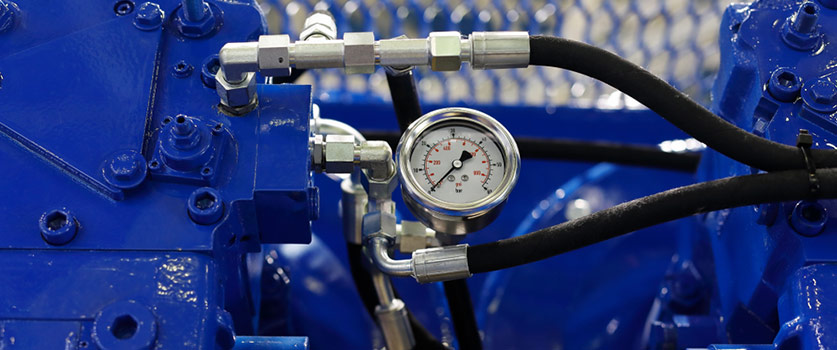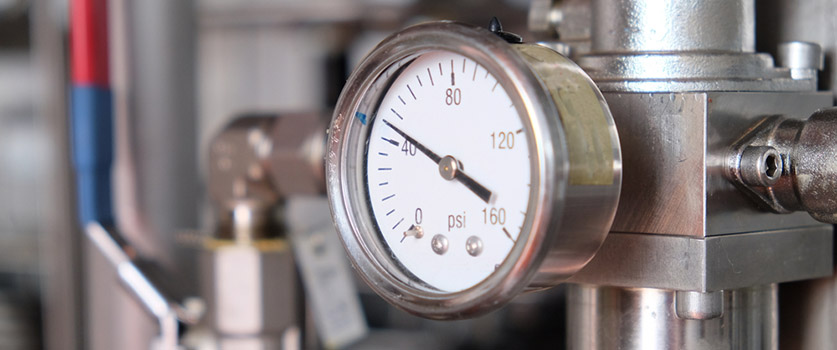Pressure Dew Point and Atmospheric Dew Point Relationship
October 27, 2020
Most industrial applications using compressed air are moisture-sensitive and will be adversely affected if improperly dried air finds its way into their production cycles.
Understanding the relationship between the pressure dew point, and the atmospheric dew point is critical to maintaining the water vapor content of compressed air within acceptable ranges.

Differences between Pressure Dew Point and Atmospheric Dew Point
Although it is easy to confuse one for the other, the measured pressure dew point of compressed air and the atmospheric dew point, are two distinct entities. For more clarity, the pressure dew point is measured within a compressed air system while the atmospheric dew point refers to a naturally occurring physical phenomenon.
What Is Dew Point (Atmospheric)?
The temperature at which the water vapor in the air reaches a maximum saturation without the influence of an external pressure source is referred to as the atmospheric dew point. In comparison to the pressure dew point, the atmospheric dew point is measured under normal atmospheric pressure not the induced conditions within an air compressor unit. It is critical in aviation and meteorology where it assists pilots and forecasters predict weather patterns.
What Is Pressure Dew Point
The pressure dew point is measured within an air compression unit at a temperature exceeding the atmospheric air pressure. This measured temperature is critical in monitoring the water vapor saturation levels of the air being compressed. Data fed to plant operators will help them understand the air-drying requirements therefore preventing the supply of moisture-saturated air to sensitive processes and equipment.
Significance of Dew Point and Air Pressure in Compressed Air Systems
A critical challenge that all compressed air system operators face is the issue of retained moisture in the air being generated. Compressed air that is heavily saturated with moisture is unsuitable for most industrial purposes and must be dried.
Accurate measurement of the dew point at different pressures will help operators detect the moisture levels within their air compression unit. This allows them to take effective corrective measures to protect their sensitive equipment.
Effects of Unchecked Moisture on Industrial Equipment
The major detrimental effects of retained moisture in compressed air on industrial equipment are outlined below:
- Equipment degradation from moisture-related corrosion
- Freezing of condensed water within equipment flow lines leading to their breakdown
- Rust damage on industrial meters and sensors resulting in faulty readings
- Increased repair/replacement costs for faulty machinery damaged by moisture
Instrument air dryers like heatless desiccant dryers or membrane dryers can be used to avoid these setbacks.

How to Measure Pressure Dew Point of Compressed Air
The most accurate method of measuring the dew point of compressed is by using a dew point sensor. This device is custom-built and incorporated into an air compressor unit to provide real-time information on the water vapor content of the air flowing through it. These sensors require minimal calibration and can function effectively for extended periods on a single calibration check.
Air Compressor Testing and Guidelines
The ISO 8573 compressed air quality standard is an internationally recognized system for determining the purity of compressed air generated by an industrial system. This system allows plant operators to assess air samples for water, oil, and particulate contaminants. ISO 8573 testing schedules are currently being used worldwide including the US, the United Kingdom, and Germany.
Testing for Water
Compressed air samples can be tested for water vapor by using one of three techniques:
- Hygrometers
- Spectroscopic analysis
- Detection tubes
ISO 8573 compliant hygrometers represent the most effective technique for reading the moisture content in compressed air. Highlighted below are the features which make them very useful in assaying air samples for water vapor.
- They are easy to calibrate and adaptable to industrial settings
- Rapid and efficient sampling of multiple air samples with different entry pressures
- A high degree of precision and accuracy
Testing for Oil
Oil residue contained within compressed air samples can damage sensitive equipment and alter production outcomes. It is therefore essential that any oil residue within compressed air is detected before use in any industrial applications. Oil testing can be conducted using one of the following methods:
- Aerosolized testing using specialized membranes
- Gas chromatography to detect oil vapor
Testing for Particulate Matter
This can be achieved using microscopic filter collection or laser particle counters. A microscopic filter uses an optical microscope to assay air samples for particulate impurities and can detect particles as little as 0.1 microns but not any smaller. By comparison, a laser particle counter is a more sensitive device capable of detecting particulate impurities of all sizes including those less than 0.1 microns in size.
GENERON Has Compressed Air Solutions for Your Industry
At GENERON, we offer our clients the very best compressed air solutions designed to cater to all their industrial needs. We support key players across multiple industries including Oil and Gas, Marine, Petrochemical, and Food and Beverage production. Our cost-effective instrument air dryers will help you achieve maximum industrial productivity while prolonging the life span of your machinery.
Contact us today for a quote or more information on how our air drying equipment can optimize your compressed air processes.
